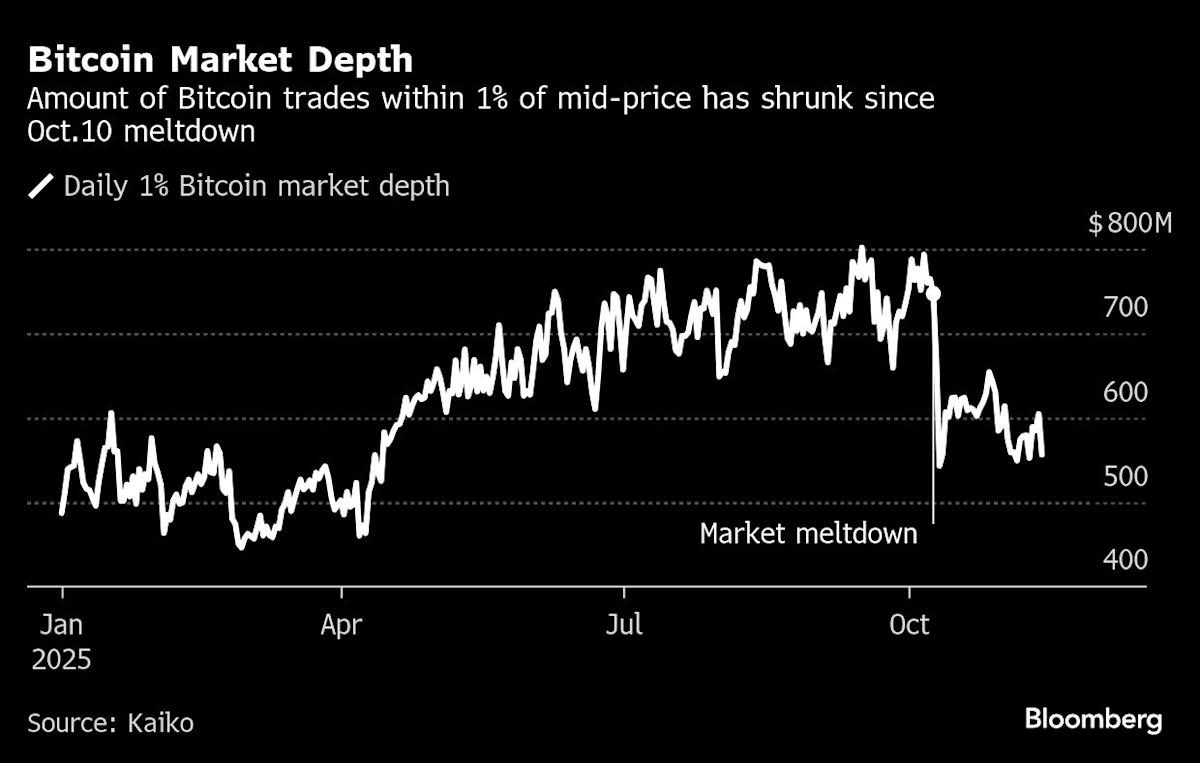Great Bitcoin Crash of 2025 Has It Lagging Bonds, Gold
(Bloomberg) — The asset once expected to “go to the moon” is struggling to keep pace with Treasuries. Bitcoin has fallen nearly 30% from its 2025 peak, lagging behind everything from tech stocks to T-bills.
Once promoted as a high-growth play, an inflation hedge, and a portfolio diversifier, the world’s largest cryptocurrency now faces the prospect of ending the year in the red — without fulfilling any of those roles.
Most Read from Bloomberg
Gold — often dismissed by Bitcoin believers as outdated — is easily outperforming the token, which the crypto faithful have dubbed digital gold. So are long-term bonds and the Nasdaq, in a year defined by falling interest rates and shrinking risk appetite.
The underperformance is even starker against benchmarks Bitcoin was supposed to outclass. The MSCI Emerging Markets Index is up sharply this year, and even the US Utilities Index — a byword for low-volatility, low-growth stability — has outpaced Bitcoin’s slide.
On Tuesday, Bitcoin briefly dipped below $90,000 — roughly the average entry price of all ETF inflows since their launch — meaning the typical ETF investor was, for a while at least, underwater. The largest cryptocurrency climbed off the seven-month low to trade about 1.5% higher to $93,241 as of 11:46 a.m. in New York.
For many, this was supposed to be crypto’s breakout year. A pro-crypto White House, new rules allowing launch of exchange-traded funds across tokens, and a wave of institutional inflows had seemingly secured digital assets a place in mainstream finance. Instead, for investors who bought near the highs, Bitcoin’s 2025 story feels familiar: a burst of euphoria, a crash, and growing disbelief.
Once pitched as everything from an inflation hedge to a growth engine and an uncorrelated store of value, the token has fallen short on every count of late. Volatile? Always. Reliable? Less and less.
That matters for professional investors. In diversified portfolios, Bitcoin has failed to offset losses from tariff-driven selloffs or amplify gains during rebounds. Nor has it acted independently when other markets turned volatile. For fund managers who saw crypto as a strategic addition, the disappointment goes beyond performance — it cuts to purpose.
Theories about what went wrong vary. Some blame October’s violent crash, which erased roughly $19 billion in leveraged positions and left deep psychological scars across the market. “10th October is definitely a longer lasting shock to the market than it appears on the surface,” said George Mandres, senior trader at XBTO Trading. “As much as market participants will try to forget or brush it off, it will remain deeply embedded in the appetite of market-makers to provide liquidity and in market participants’ conviction and risk appetite.”



Leave a Comment
Your email address will not be published. Required fields are marked *